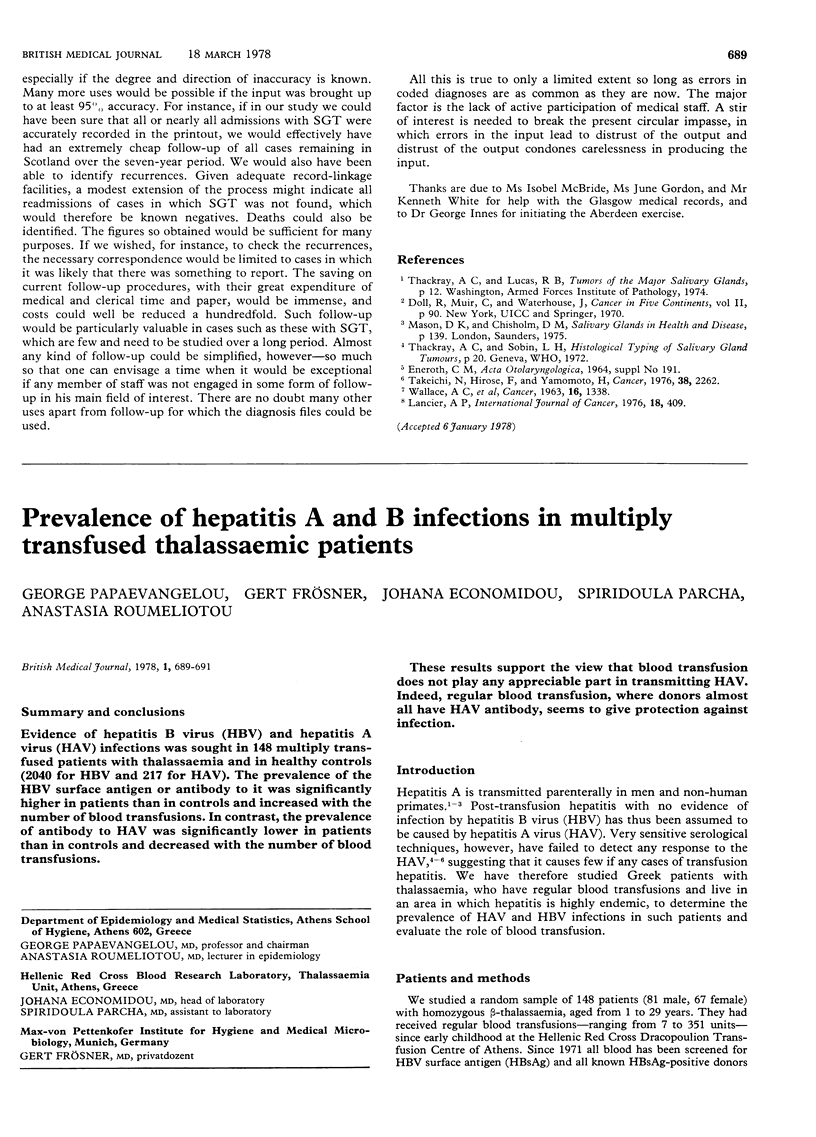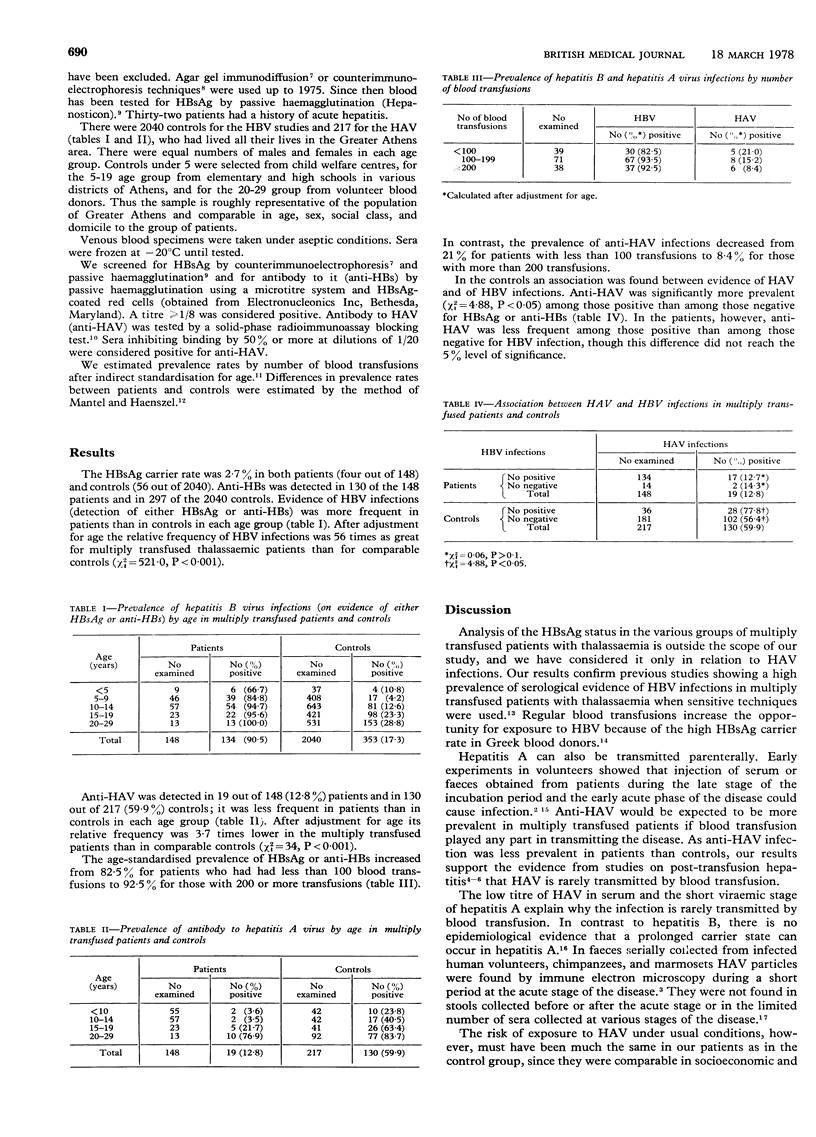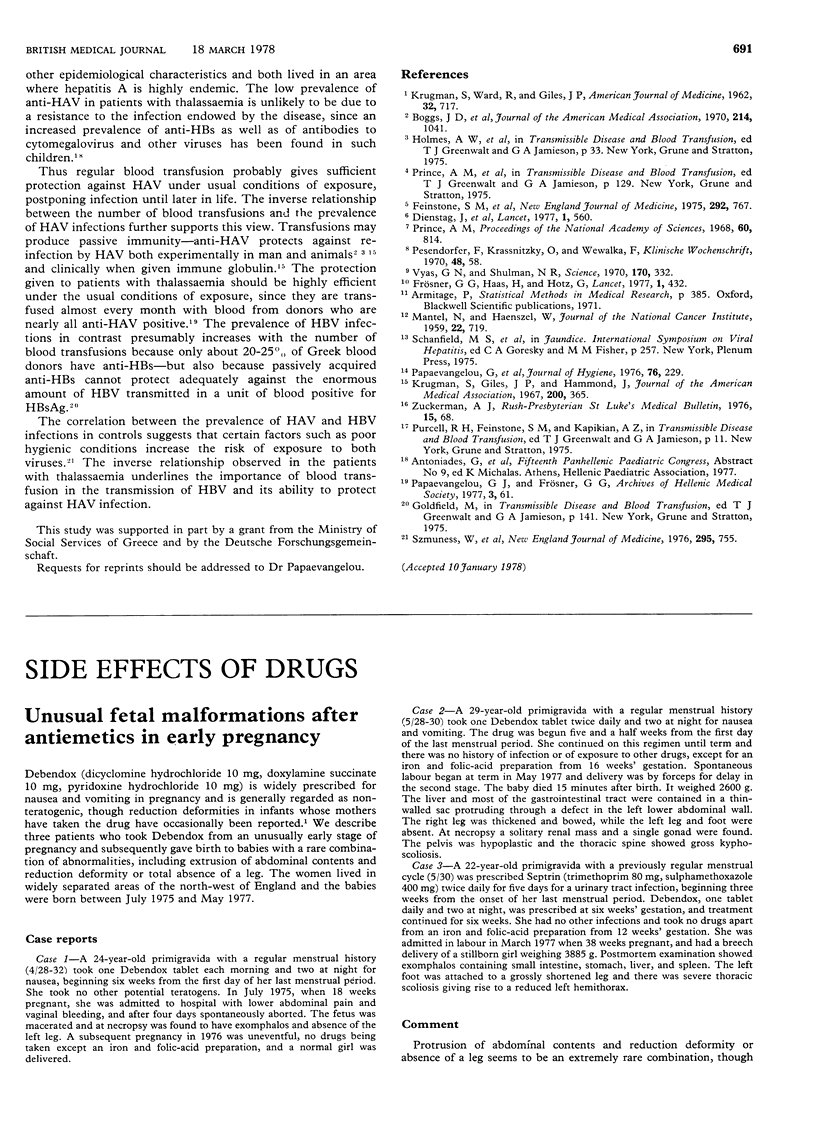Abstract
Evidence of hepatitis B virus (HBV) and hepatitis A virus (HAV) infections was south in 148 multiply transfused patients with thalassaemia and in healthy controls (2040 for HBV and 217 for HAV). The prevalence of the HBV surface antigen or antibody to it was significantly higher in patients than in controls and increased with the number of blood transfusions. In contrast, the prevalence of antibody to HAV was significantly lower in patients than in controls and decreased with the number of blood transfusions. These results support the view that blood transfusion does not play any appreciable part in transmitting HAV. Indeed, regular blood transfusion, where donors almost all have HAV antibody, seems to give protection against infection.
Full text
PDF


Selected References
These references are in PubMed. This may not be the complete list of references from this article.
- Boggs J. D., Melnick J. L., Conrad M. E., Felsher B. F. Viral hepatitis. Clinical and tissue culture studies. JAMA. 1970 Nov 9;214(6):1041–1046. doi: 10.1001/jama.214.6.1041. [DOI] [PubMed] [Google Scholar]
- Dienstag J. L., Purcell H. R., Alter H. J., Feinstone S. M., Wong D. C., Holland P. V. Non-A, non-B post-transfusion hepatitis. Lancet. 1977 Mar 12;1(8011):560–562. doi: 10.1016/s0140-6736(77)91996-1. [DOI] [PubMed] [Google Scholar]
- Feinstone S. M., Kapikian A. Z., Purcell R. H., Alter H. J., Holland P. V. Transfusion-associated hepatitis not due to viral hepatitis type A or B. N Engl J Med. 1975 Apr 10;292(15):767–770. doi: 10.1056/NEJM197504102921502. [DOI] [PubMed] [Google Scholar]
- Frosner G. G., Haas H., Hotz G. Hepatitis-A-Antibody in commercial lots of immune serum globulin. Lancet. 1977 Feb 19;1(8008):432–433. doi: 10.1016/s0140-6736(77)92648-4. [DOI] [PubMed] [Google Scholar]
- KRUGMAN S., WARD R., GILES J. P. The natural history of infectious hepatitis. Am J Med. 1962 May;32:717–728. doi: 10.1016/0002-9343(62)90161-4. [DOI] [PubMed] [Google Scholar]
- Krugman S., Giles J. P., Hammond J. Infectious hepatitis. Evidence for two distinctive clinical, epidemiological, and immunological types of infection. JAMA. 1967 May 1;200(5):365–373. doi: 10.1001/jama.200.5.365. [DOI] [PubMed] [Google Scholar]
- MANTEL N., HAENSZEL W. Statistical aspects of the analysis of data from retrospective studies of disease. J Natl Cancer Inst. 1959 Apr;22(4):719–748. [PubMed] [Google Scholar]
- Papaevangelou G., Kyriakidou A., Vissoulis C., Trichopoulos D. Seroepidemiological study of HBV infections in Athens, Greece. J Hyg (Lond) 1976 Apr;76(2):229–234. doi: 10.1017/s0022172400055121. [DOI] [PMC free article] [PubMed] [Google Scholar]
- Pesendorfer F., Krassnitzky O., Wewalka F. Immunelektrophoretischer Nachweis von "Hepatitis-Associated-Antigen" (Au-SH-Antigen. Klin Wochenschr. 1970 Jan 1;48(1):58–59. doi: 10.1007/BF01486135. [DOI] [PubMed] [Google Scholar]
- Vyas G. N., Shulman N. R. Hemagglutination assay for antigen and antibody associated with viral hepatitis. Science. 1970 Oct 16;170(3955):332–333. doi: 10.1126/science.170.3955.332. [DOI] [PubMed] [Google Scholar]


